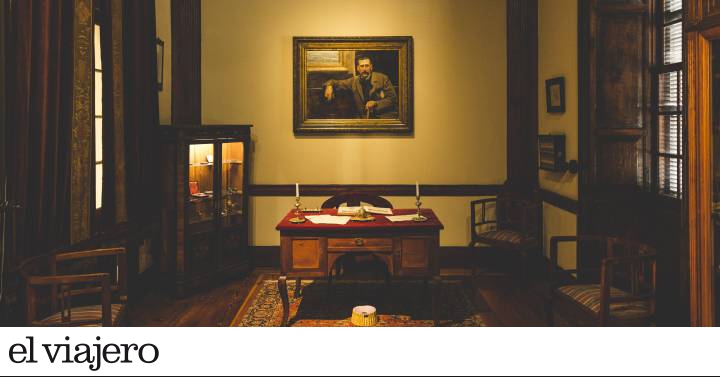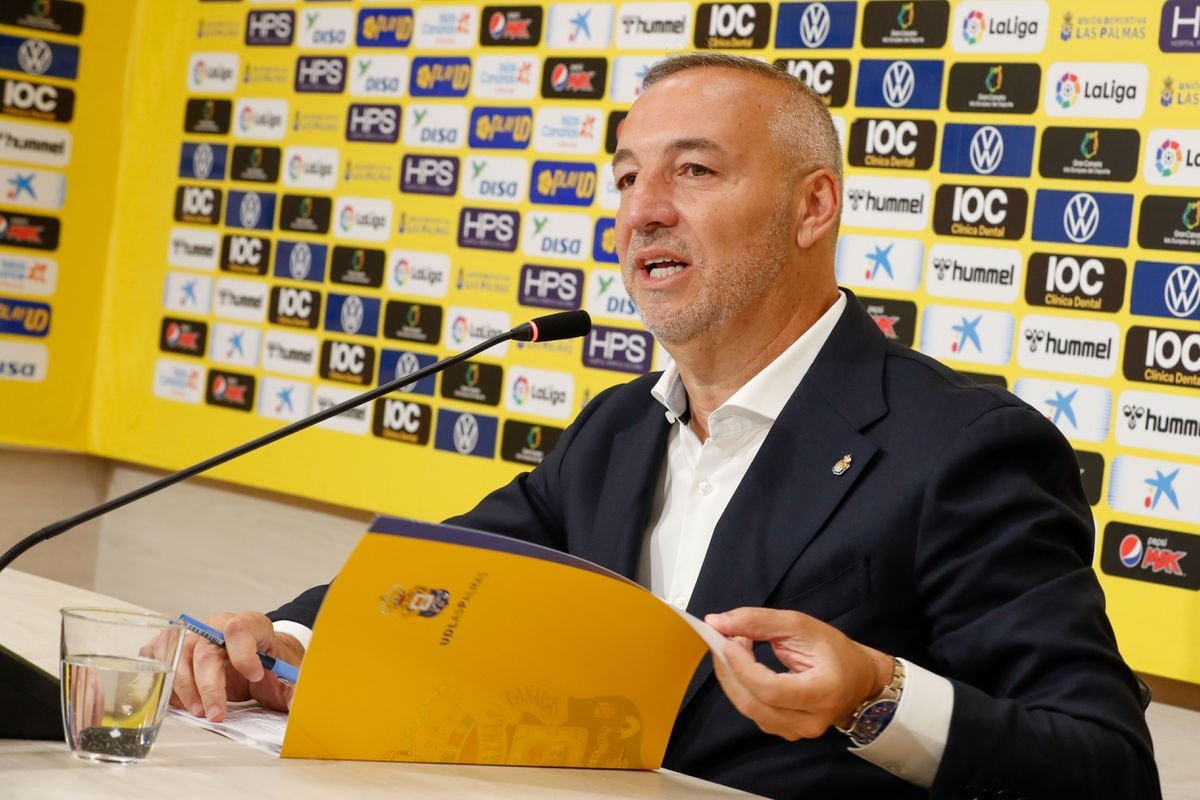MORE INFORMATION
A troglodyte town in Gran Canaria
The lookouts of San Cristóbal
Along some cobbled and dusty streets, in which centers of culture, education and progress slowly grew, Benito ran and played.
He was going from his house at number 6 Calle del Cano, in the Triana neighborhood of Las Palmas de Gran Canaria, to the Muelle Viejo.
On the edge of the hermitage of San Telmo, he contemplated the votive offerings in the shape of small boats that hung inside.
From this port he set sail in 1862 for Madrid, making a stopover in Tenerife and Cádiz, to study law and end up being a novelist.
A two-week trip that he made five times in his life.
Nineteen years spent Benito Pérez Galdós (1843-1920) in Las Palmas.
Then a city enclosed in a wall, nineteenth-century, more pious than cultured and illuminated by torches and oil lanterns.
Its 15,000 inhabitants were divided between two intramural neighborhoods: Triana, commercial and modern, and Vegueta, stately and old.
Both separated by the Guiniguada ravine, through which the water from the Gran Canaria peaks flowed towards the Atlantic, and communicated by the Piedra and Palo bridges.
In that isolated city, full of convents and a conservative society, he grew up and trained.
enlarge photo COVA FDEZ.
The first settlers of the Triana neighborhood were Andalusians from the Seville neighborhood of Triana, from which they adopted their name out of nostalgia.
From the twentieth century it was inhabited by English and Indian merchants.
Before the latter arrived, the Pérez Galdós family settled in a mansion with traditional Canarian urban architecture from the 18th century.
Instead of a bell, a chime announced the visitors, who entered a courtyard after passing through a narrow hallway.
Around the inner courtyard were the kitchen, the oven and the pantry, and in the center was a palm tree and a well.
A three-story house with enough space for Benito's parents and nine siblings.
He, the tenth, was baptized in the church of San Francisco de Las Palmas, whose ringing of bells was recorded forever with a few words from the novelist on the belfry: "His son would distinguish him among a hundred who played at the same time."
A finer ear than his first drawings, poems and newspaper articles signed at the Colegio de San Agustín.
Satirical exercises that resulted in problems with his teachers and classmates.
On the way to school, he saw how the works on the Cathedral of Santa Ana progressed, an unfinished temple that inspired him to create the palanquero of the organ that was the protagonist of the
obituary
story
of a prototype
.
enlarge photo The Cathedral of Santa Ana, in the Vegueta de Las Palmas neighborhood.
getty images
He took a liking to pen and paper and redrew a satirical strip, this time in protest at the location of the new Tirso de Molina theater in Bocabarranco.
By the ocean, the sound of the waves breaking against the pebbles of the beach would engulf the voices of the artists.
Finally, the municipal authorities erected a retaining wall and removed the fish sheds from the area.
Some time later, in that same location, his work
Electra
was performed
—which scandalized the Church— and was renamed the Pérez Galdós theater.
Writing as a witness to what he saw on the street brought him enemies, but did not slow down the pace of his writing.
The prolific author signed more than 100 works
(Marianela, Doña Perfecta, Fortunata and Jacinta, the National Episodes ...),
which make him one of the most important Spanish novelists, despite remaining at the gates of the Nobel Prize for Literature in 1915 .
One of the illustrations of the Vive Ciudad Galdós project, the work of the artist Sabotaje al Montaña, in the Schamann neighborhood of Las Palmas de Gran Canaria.
DANIEL MARTORELL
A very literary street map
In this year of the centenary of his death, the center of the commemorative events is Madrid, where he died and wrote his main work.
In his hometown several exhibitions were held at the beginning of the year, and in September the
Pérez Galdós
exhibition was inaugurated in his house museum
.
The human truth
, postponed in April due to the pandemic (until December 15; casamuseoperezgaldos.com).
But Las Palmas honors him every day.
His novels and characters give name to the streets of the Schamann neighborhood;
a suburb preceded by the park of Don Benito Pérez Galdós.
Instead of graffiti, tarps cover the facades of four buildings with illustrations by Federico Viera, Marianela, El Abuelo and the novelist himself.
Las Palmas does not forget its neighbor, just as he missed his city so much that he took with him a sack of volcanic earth for his house in Madrid and his farm in Santander.
Madrid provided Galdós with a character, Las Palmas made his home a museum.
On the facade there are some words of the author: “Where am I from?
Man, if everyone knows that: from Las Palmas ”.
Inside there is a portrait painted by Joaquín Sorolla, the manuscripts of
Marianela
and
Nazarín
, his piano;
writings, drawings and photos;
furniture designed by himself, galleys or translations of his works into Japanese, Chinese and Russian.
Also the Galdosian epistolary, which provides details of his life, work and the social, political and literary context of the time.
Of the letters between Galdós and Emilia Pardo Bazán, colleague and lover, only the ones that the Galician sent him remain.
The Turner publishing house has compiled them in a book,
My Little Boy.
Letters to Galdós
, and they narrate the beginning of a relationship that went from friendship to romance to end as it started.
He never married, although he did recognize a daughter, María, the fruit of his relationship with Lorenza Cobián.
With less money than expected in a novelist of his worth and with the volume of his work, and already blind - he dictated to finish the
National Episodes
-, he died in Madrid in 1920, surrounded by popular heat.
Find inspiration for your next trips on our Facebook and Twitter and Instragram or subscribe here to the El Viajero Newsletter.




/cloudfront-eu-central-1.images.arcpublishing.com/prisa/QX25HPPJEBAX7GZZQ7G75MAE4E.jpg)


/cloudfront-eu-central-1.images.arcpublishing.com/prisa/ADAGPZICY5ATDGEMTLTDWTX3LM.jpg)







